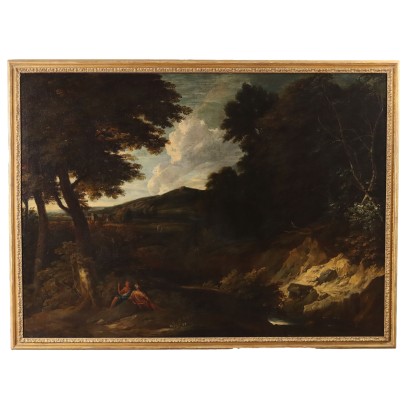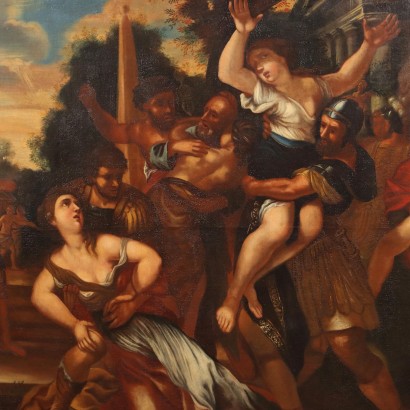ARARPI0233329
Antique Painting Landscape Oil on Canvas XVII Century
Oil painting on canvas. Roman school of the 17th century. The landscape, large and airy, pervaded by a "classical", timeless atmosphere, fits into the classicizing current of ideal views taken from the Roman countryside, introduced to Rome with great success during the 17th century following the example of Carracci, Domenico, Albani and the French Poussin, Dughet, Lorrain, and continued into the following century with artists such as Andrea Locatelli. This type of landscape paintings aimed to exalt the principles of beauty, reason, order and measure typical of the classical world, to celebrate the value of history, the trust inherited from the ancients in the virtues of man and his possibilities. In the nature of these landscapes, which is not abandoned to chaos, but is composed, orderly, not disturbed by violent or disorderly elements, human figures are placed, dressed in the old style as in this painting, in which a couple dressed in classic tunics she converses amiably sitting (or rather, half-reclining almost as if they were on a triclinium) in the middle of a shady and green countryside, near a quiet river; in the distance you can glimpse the buildings of a city and your gaze is then lost in the orderly and peaceful continuity of the rolling hills of Lazio. The painting, restored and relined, is presented in a period frame.














